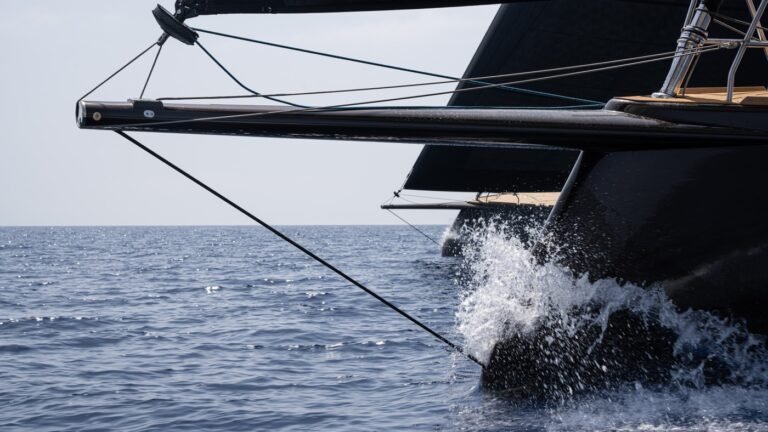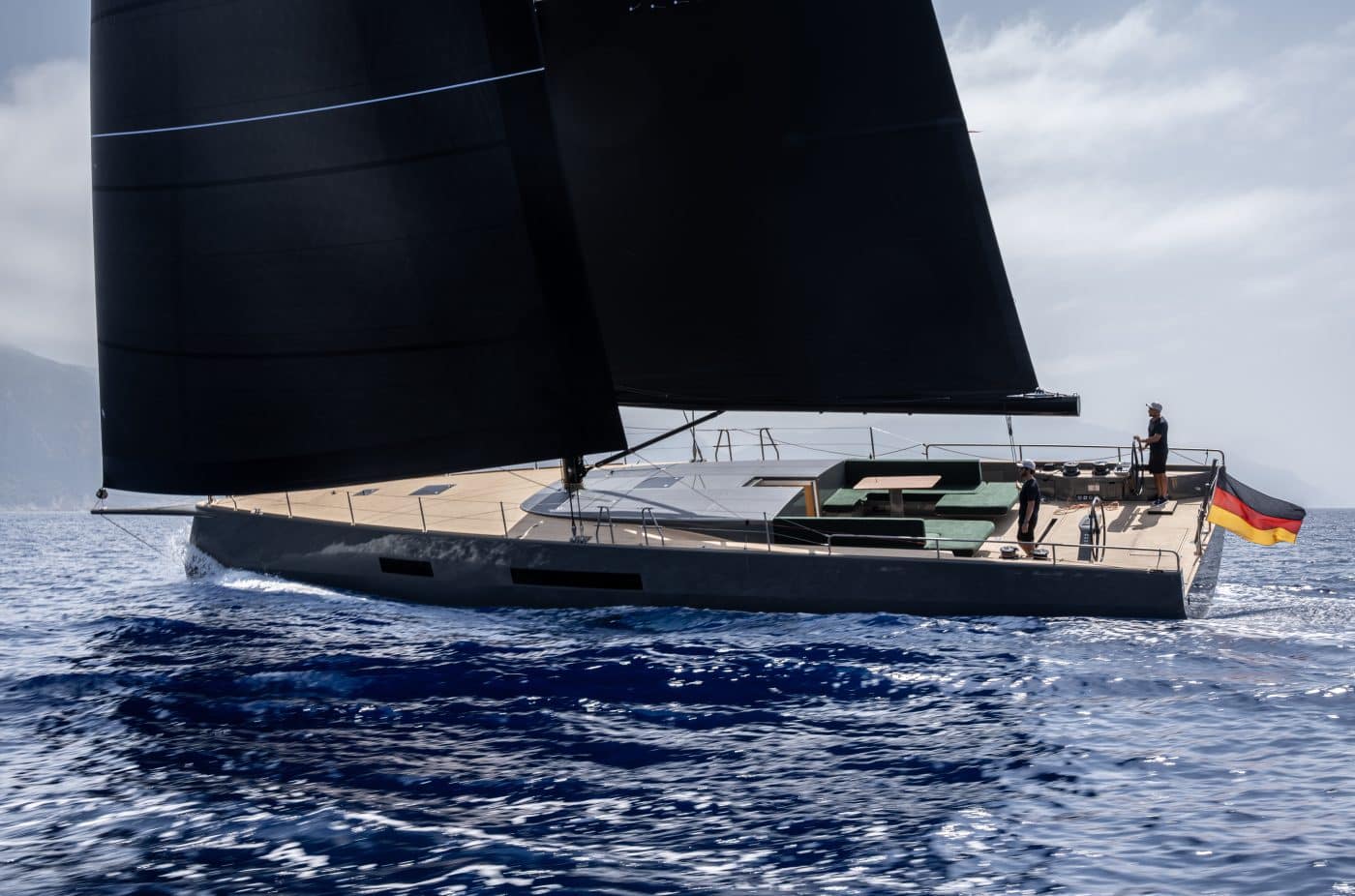
SEAHORSE MAGAZINE: Just unplug and play
5 June 2025
With the 68 Café Racer Baltic Yachts has pioneered a successful new concept in yachting… and now there’s a prospect of fleet racing
Some yachts, though not many, make a riveting first impression. The Baltic 68 Café Racer is one of them. Whether you’re looking at her alongside a dock or anchored in a bay, motoring into harbour or powering along under sail, when viewed from any angle this 21-metre design by Javier Jaudenes has that rare, elusive combination of perfect elegance, balance and poise.
Seen from afar, the Café Racer’s silhouette is very distinctive. At closer range the fine details of her sleek, clean lines – the gentle reverse sheer of the gunwales, the stem of the dreadnought bow rising from the water in precise alignment with the headstay – leave little doubt as to her provenance. When moored up in a marina, Baltic Yachts’ superlative quality of finish makes her literally shine and stand out from the crowd.
But the Café Racer is a great deal more than just an exceptionally good-looking boat. It’s a new concept in yachting, inspired by the café racer motorbikes that London’s rockers used to ride in the 1960s. These were powerful, muscular machines with a visually minimalist aesthetic, optimised for fast rides over short distances. Their owners were elite figures in the counterculture of the Swinging Sixties, strongly associated with rebellion, high status and speed.
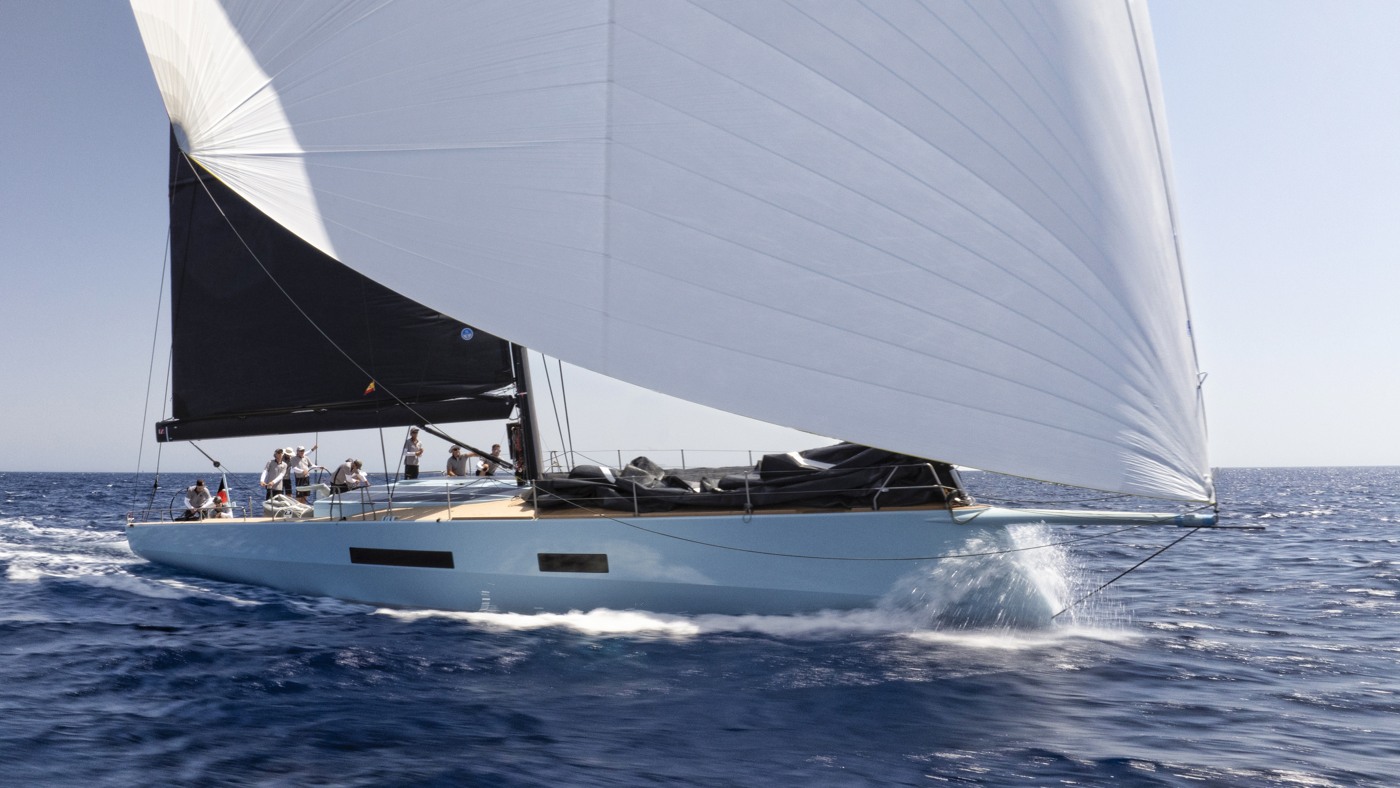
Boats with this level of sailing performance have never been as easy to helm and handle
When you translate the distilled essence of that ethos into a state-of-the art sailing yacht, what you get is a Baltic 68 Café Racer. Astonishingly fast and exhilarating to sail, sophisticated and highly refined, it’s also determinedly simple and remarkably easy to handle. Few if any other yachts on the market, for now at least, can bear a direct comparison with this next-generation daysailer and weekender.
The performance potential of a Café Racer and its power-to-weight ratio are virtually on a par with a dedicated raceboat. In her first competitive outings, hull number two in this semi-custom series, Open Season, won a day’s racing overall and on handicap at each of two major Mediterranean regattas, the Maxi Yacht Rolex Cup and Les Voiles de St Tropez. What sets the Café Racer apart from its peers on the racecourse, though, is that this is a yacht primarily conceived, engineered and configured to allow easy, carefree sailing for pure enjoyment.
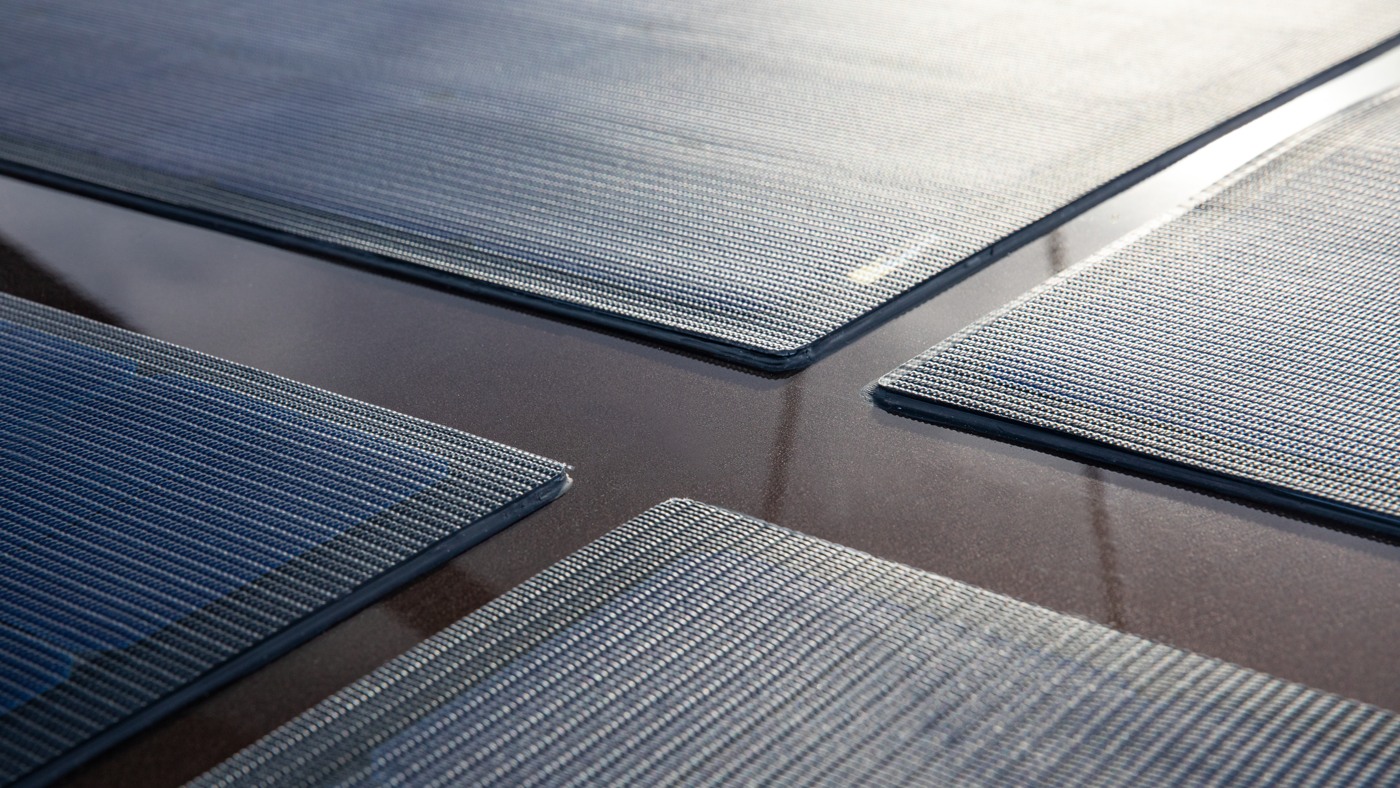
Slimline solar panels on the coachroof
‘We’ve positioned the Café Racer at a crossover point,’ says Baltic Yachts’ EVP Henry Hawkins. ’It’s large enough for the owner to comfortably spend a weekend on board with professional crew but it can also be managed without any crew by an experienced yachtsman sailing with friends. At 68ft it’s as big as you’d want for cruising two-up. If you’re going to race, obviously you will need more crew.’
What is it that makes these boats so easy and enjoyable to sail? It’s a combination of factors, Hawkins explains, and ultra-light displacement makes a huge difference. ‘The whole point of sailing is recreation, time off, a bit of head space,’ he says. ‘A vessel as light as a Café Racer is much more easily driven and therefore the loads are reduced. This is important, especially for shorthanded sailing. You’re not dealing with massive, dangerously high loads even though they’re large and powerful boats. That’s the key to easy and stress-free sailing.’
The boat’s systems are fully integrated, user friendly and designed so you can simply unplug from shore power, cast off your lines and go. Electric pod drives make them almost silent under power, with virtually no vibration. The sails are easy to trim with precision, the rig is highly tweakable and it requires no backstay in normal operation, which makes it practical to cruise with a squaretop main.
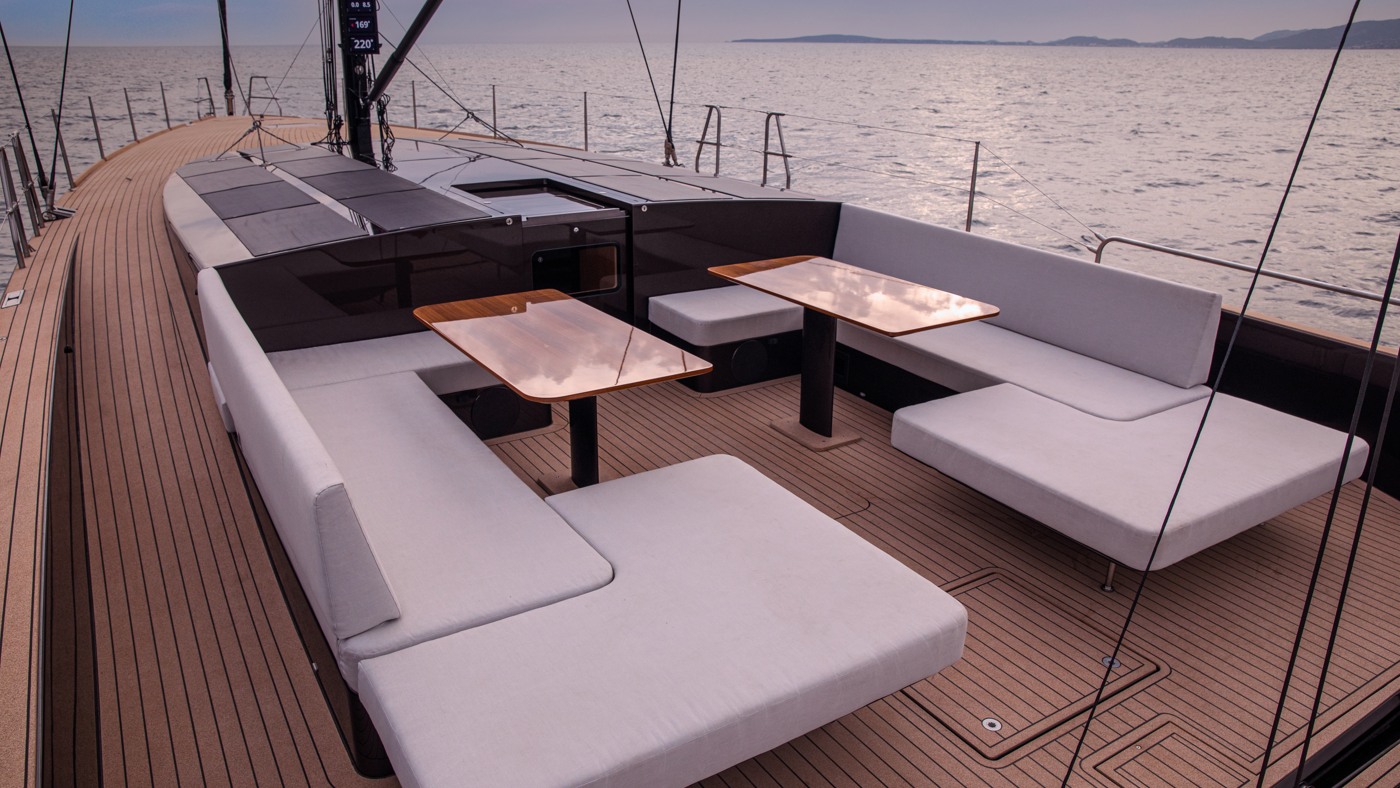
The view over the deck from the helm stations and cockpit is beautifully uncluttered
You might expect a performance penalty from a rig with no backstay, but Hawkins says in this case the difference is vanishingly small. The original Café Racer Pink Gin Verde was one of the first boats in the world to use Doyle Sails’ Structured Luff mainsail technology to full advantage, around the same time as its adoption at the apex of grand prix yacht racing and several years before it appeared on large, high-performance cruising multihulls. A lens of carbon fibre structure within the luff of the mainsail creates pre-bend in the mast when the cunningham line is tensioned.
‘When you load up the cunningham on this boat it changes the sail shape completely,’ says Mario Giattino, director of Doyle Sails Italy, who was involved in the rig package design loop for the Café Racer. ‘It’s incredible how far you can move the masthead just by hauling the cunningham up and down. This technology has also been tested in the America’s Cup and on Maxi72s.’
The sail-handling systems are entirely electric, which Open Season’s owner Thomas Bscher says is a massive improvement in the quality of life on board. ‘One of the wonderful things about this boat is the absence of noise,’ he explains. ‘It’s like the old wooden dinghy from my childhood. My last boat couldn’t sail without these screaming hydraulics. We were running them at 380 bar, others had 720 and it’s a life-threatening situation if something breaks with so much oil pressure. I don’t want that any more.’
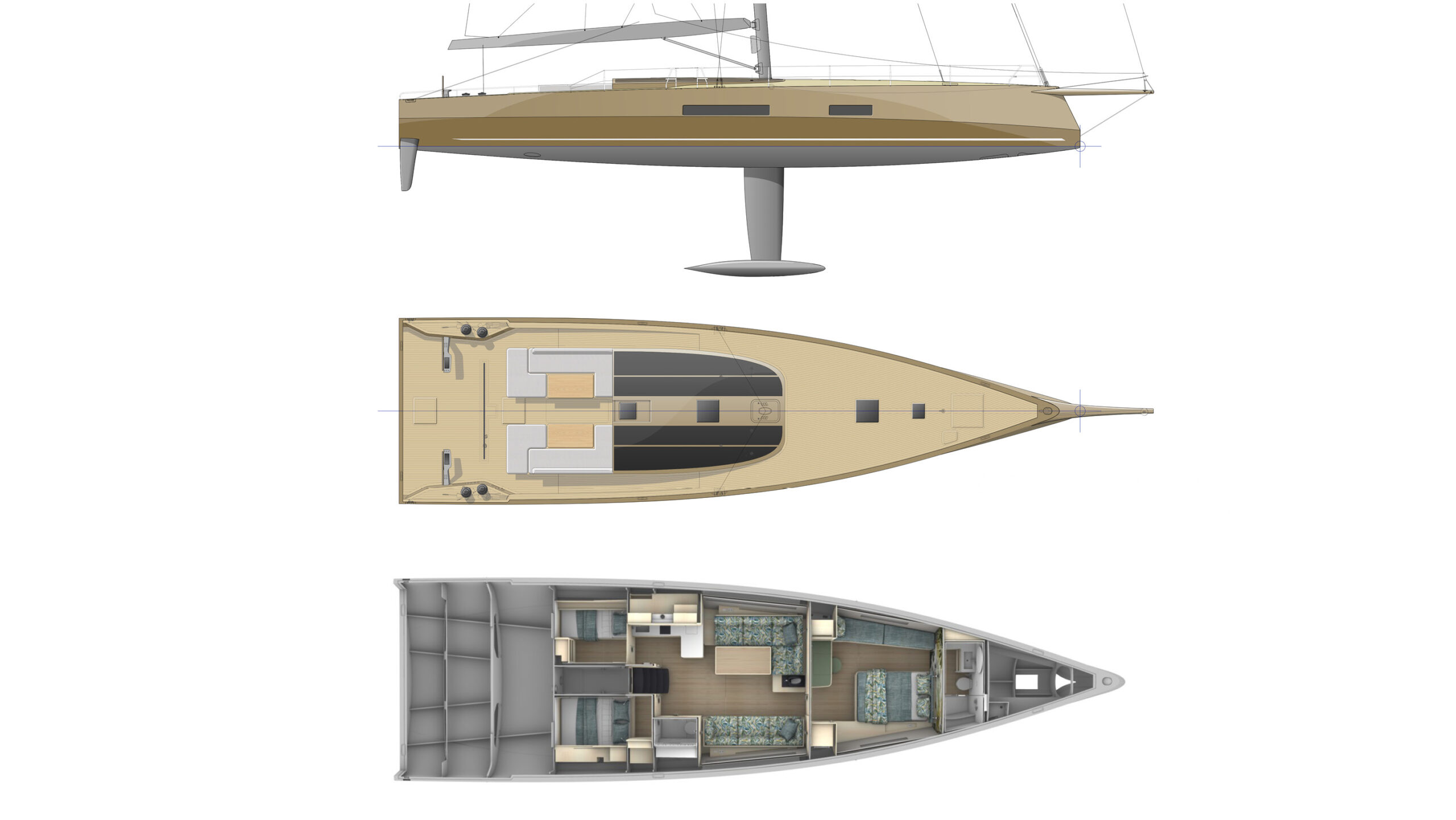
Javier Jaudenes – Surge Projects Yacht Design
This exceptional project was signed on the very day we, the sailors, were heading to the airport to return home from the Antigua Superyacht Cup in March 2020, just as the world was entering lockdown. Amid a mix of excitement and uncertainty, I took on the responsibility of leading the design and development of this project, which was carried out entirely remotely over the next six months during the lockdown in Spain.
The lockdown turned out to be a unique advantage, allowing for seamless collaboration between the companies involved. I worked closely with Juan Meseguer from North Sails, who ran the aero data on the RANSE Virtual Tunnel, while KND handled hydrodynamics and VPP evaluation. Together, we tested multiple hull shapes. Meanwhile, Pure worked on the vessel’s structure, with Jens Paulus and me overseeing the interior arrangements, ensuring everything aligned with our shared vision.
What made this project truly unique was the trust and freedom the client placed in us to design a stylish day sailor. This rare opportunity pushed us to create something truly special—not just another day sailor, but a vessel with its own distinct character.
The vision we had for this project was to deliver a fast, agile, comfortable, and safe sailing experience that would bring back the essence of sailing. The goal was to create a yacht that could cater to everyone on board, from families and friends to the most demanding sailors, with the ability to switch seamlessly to pure racing mode when needed.
The hull features a generous maximum beam on a chined hull shape, with a narrow waterline and minimal wetted surface area (WSA). This combination, along with a generous sail plan, makes the boat exceptionally agile, particularly in the light winds of the Mediterranean. Her hull lines are optimised to maximise performance when reaching and on offwind angles, easily matching boat speed with true wind speeds of up to 20kts.
The deck layout ensures that all sailing operations could be carried out from the aft steering and pit winches console, keeping the deck clean and safe. The cockpit is fitted with comfortable sofas and dining tables for cruising, which can be easily removed when preparing for racing.
Jens Paulus’ luxurious and clean interior design, together with the above features, resulted in a vessel that fulfils every possible need, making her a truly versatile and high-performance yacht.
The first opportunity to see the boat “in person” was at the launch ceremony, a memorable moment where all the efforts came together, and the vision became a reality.
This entire project was brought to life through the excellence of Baltic Yachts, whose craftsmanship and attention to detail elevated the design to an extraordinary level of quality and precision.

Low freeboard and a wideopen cockpit with outboard helm positions make this a very engaging boat to sail
Above all, the Café Racer is designed around the fact that time has become the most valuable commodity for the modern yacht owner. When you want to go sailing, it’s ready to go. ‘We use it mainly as a family boat and for that we love that it has no backstays because it makes holiday sailing much easier,’ Bscher says. ‘We do use running backstays for racing.’
‘Last year we had maybe 21 knots of wind, the boat was up on the plane and we were doing 23-24 knots like a motorboat,’ he says. ‘No other boat in this field – yet – will do that.’
Four Baltic 68 Café Racers have now been delivered and it’s interesting to note that all of their owners have downsized from much larger, more complex sailing yachts. For example Pink Gin Verde’s first owner had a Baltic 175 and Thomas Bscher’s previous Open Season was an extended former Wallycento.
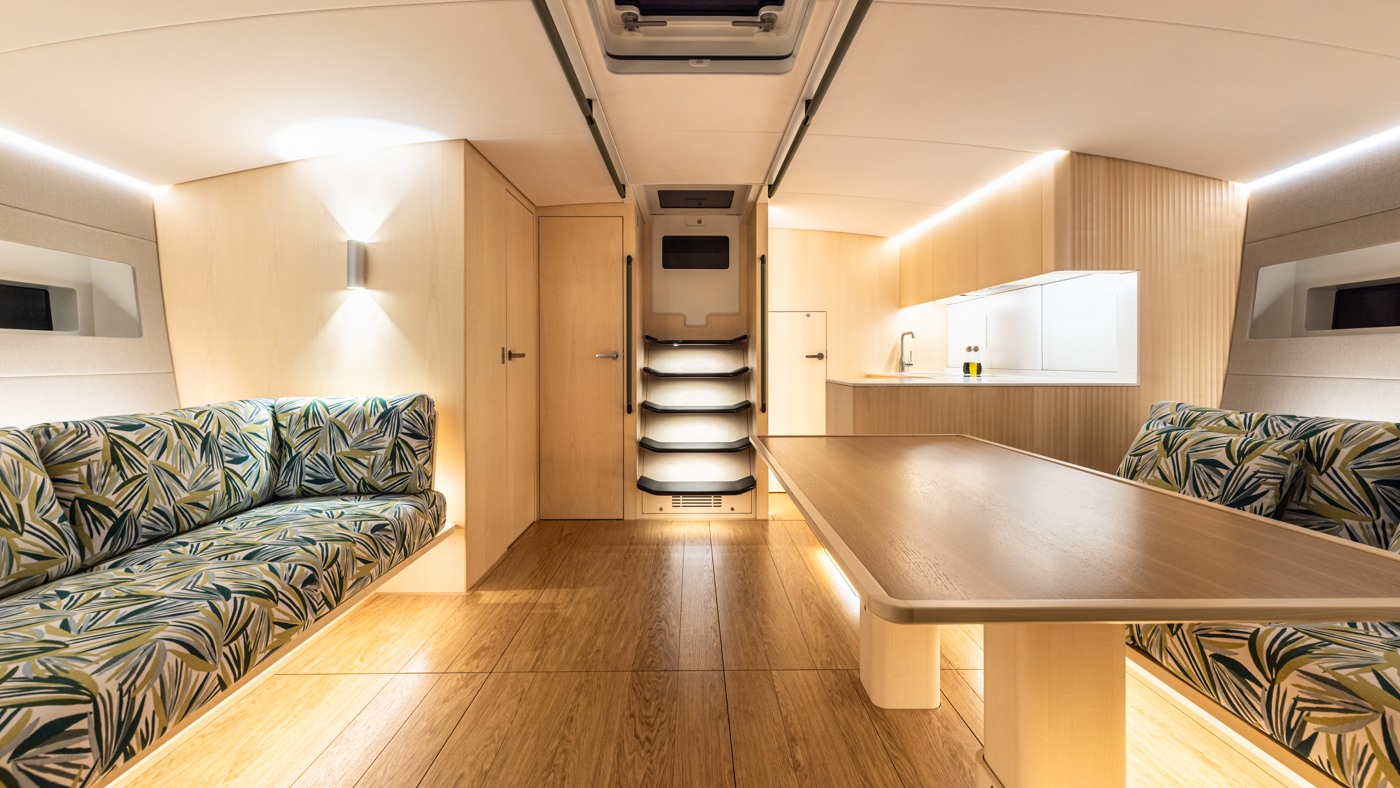
The very spacious, open plan saloon is a key feature of the Baltic 68 Café Racer’s interior
‘Many of our clients are looking for easy-to-use boats,’ Hawkins observes. ‘This is them getting something for the weekend, getting their hands back on the wheel and enjoying sailing with friends.’ The Café Racer’s low freeboard, super clean deck layout and wide open cockpit with outboard helm positions create a feeling of direct connection with the water. It is a very engaging boat to sail.
One major advantage from a buyer’s perspective is that the total lead time to build a Café Racer is less than a year. That’s remarkably quick given the sophistication of the boat’s construction, which involves a fully optimised laminate layout with extensive use of unidirectional carbon fibres and honeycomb core, plus fit-out, systems and finish to full superyacht standards. Mattias Svenlin, a technical project leader at Baltic who has overseen the construction of several Café Racers, says with all this plus a precise and demanding target for the final displacement weight, they are both challenging and interesting to build.
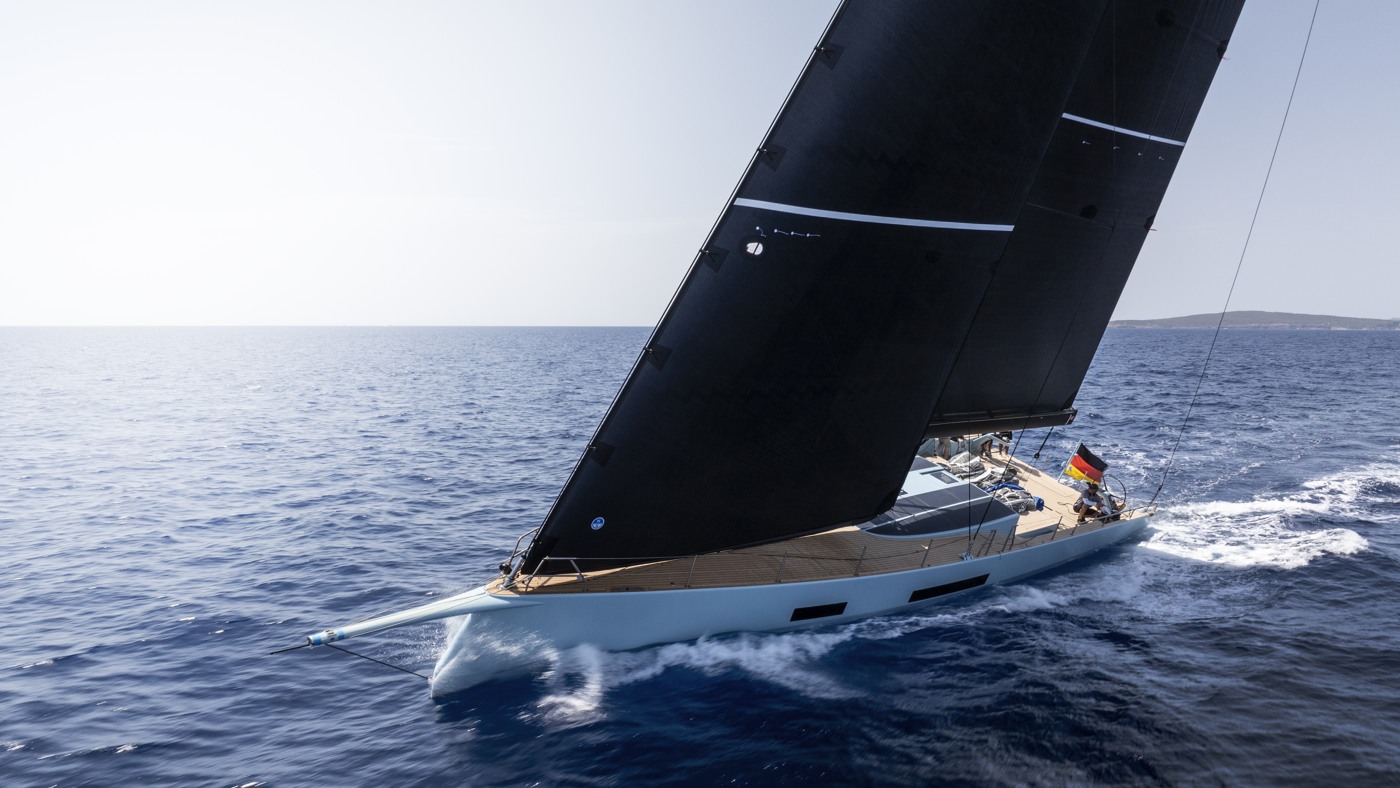
Two-cabin and three-cabin interior layout options are available – hull number four Hormar has the latter – and owners can either bring in their own interior designer or choose from several existing schemes. ‘In this regard each of our 68s looks completely different,’ Svenlin says. ‘When you go down below it should feel like home, so all of the owners have put their own personal touch on the interior. One likes to be reminded of their penthouse in Paris, for example, while another wants to get the feeling of their favourite club in Cuba.’ What all four boats have in common is a spacious owner’s suite up forward and a very large saloon.
Major regattas such as Superyacht Cup Palma and Joy Ibiza have been eager to welcome Café Racers at their events – there has even been some talk of a class – which adds an extra dimension to the boat’s appeal. It’s also significant that all four of the Café Racers delivered so far are currently based in Palma, thus the prospect of closely matched fleet racing on a regular basis has emerged.
The key concept of reducing the stress and complications of yacht ownership to an absolute minimum can be extended still further with Baltic Yachts’ gardiannage service. ‘That is a major benefit for owners, having us take full responsibility for all aspects of your boat’s servicing and maintenance,’ Hawkins says. ‘Whenever you want to go sailing, you simply turn up, cast off your lines and go with full confidence that all systems are working perfectly and the best possible support is on hand locally if you ever happen to need it.’

